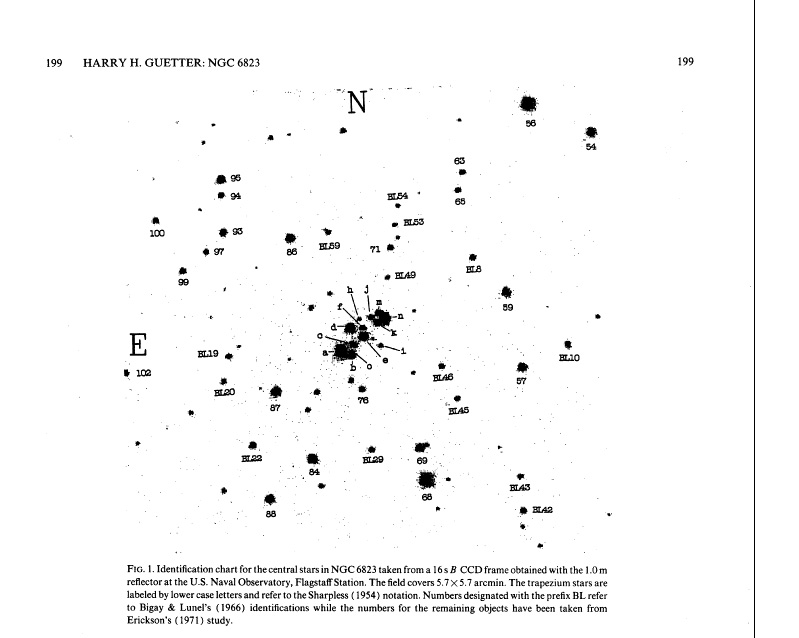
The open cluster NGC 6823 represents the central core of the Vulpecula OB1 association, a network of young stars in the Orion arm of our galaxy. The cluster is associated with the HII region Sharpless 86 and located within the mixed emission and reflection cloud NGC 6820. Dispersed among the surrounding nebulosity is a host of dark clouds, elephant trunk like pillars, and several Bok globules (see M8). Bok Globules represent collapsing protostellar cores of gas and dust with diameters of about 10,000 astronomical units. The cores will ultimately evolve to form infant stars.
The multiple star system BD + 22 3782 is the dominant member of the cluster and likely the illuminating source for its nebulosity. The stars of NGC 6823 are estimated to be between 2 and 5 million years old and are divided into three segregations depending on their distance from the center. Most central is the trapezium-like system of 13 hot OB type stars (designated BD + 22 3782) that occupy the most central region within a radius of about 0.6 arc minutes (1.3 x 0.7 light years). The nucleus consists of stars just outside the trapezium between 0.6 and 3.5 arc minutes of the center. The corona contains the fainter, outer stars of the cluster beyond a radius of 3.5 arc minutes.
BD+223782, the central dominant star system of the cluster is a trapezium-like multiple star system. It contains 13 hot O and B type stars designated A through M by Sharpless who first described the core of stars in 1954. They are arranged in a chain of several compact systems all separated by similar distances. It has long been observed that a large percentage of OB-type stars exist at the center of clusters and are often characterized by a core of stars that exist in a multiple star system similar to the prototypical system of this type, the trapezium cluster of the Orion nebula. Trapezium-like stellar systems are specifically defined as compact multiple systems of massive O and B-type stars having at least three compact components and located at the center of clusters. They differ from the familiar type of multiple stars in that the separation between components is always of the same magnitude. The trapezium stars of BD + 22 3782 occupy a compact region of about 1.3 x 0.7 light years in the center of the cluster. The brightest and most massive individuals are O-type giants of about 30 solar masses.

